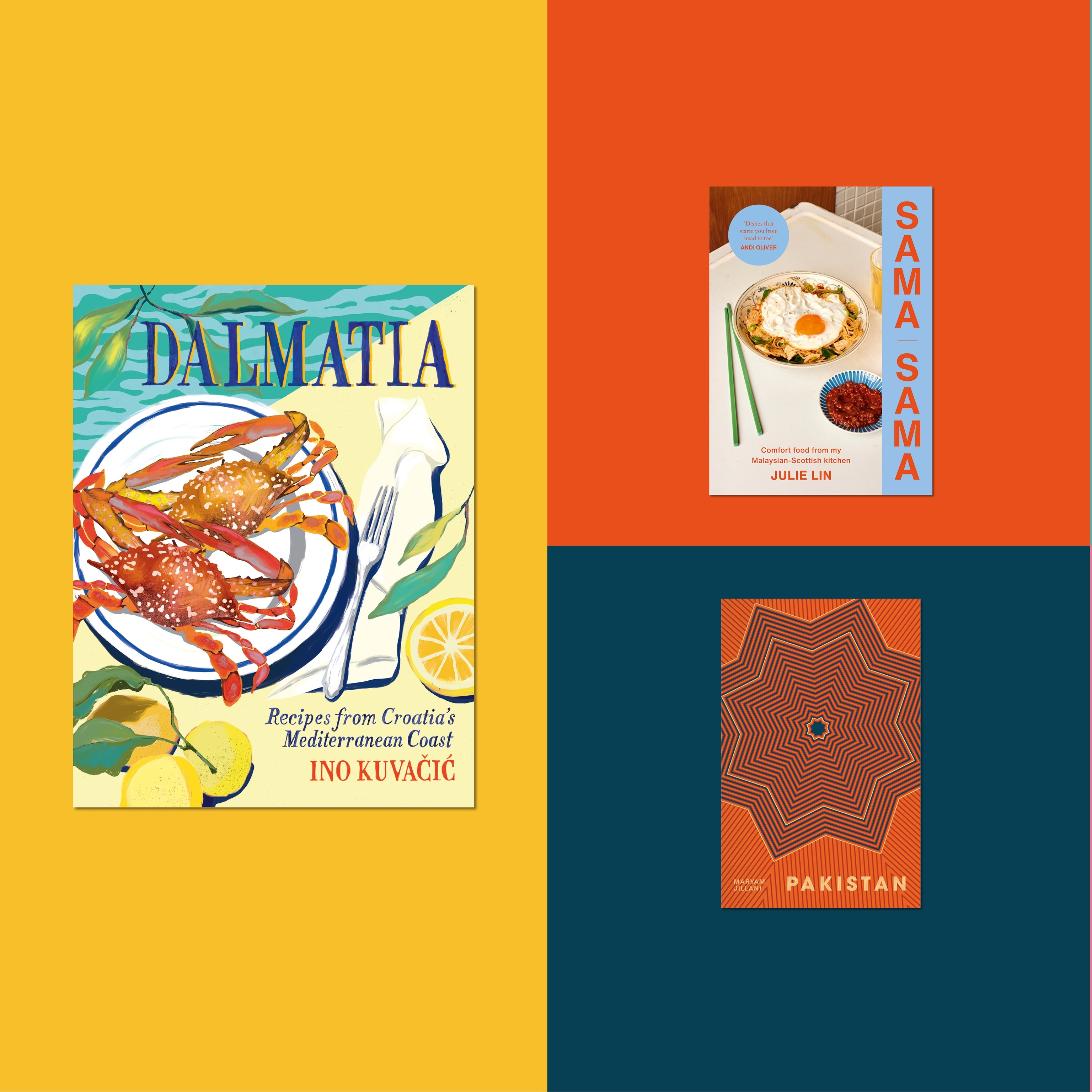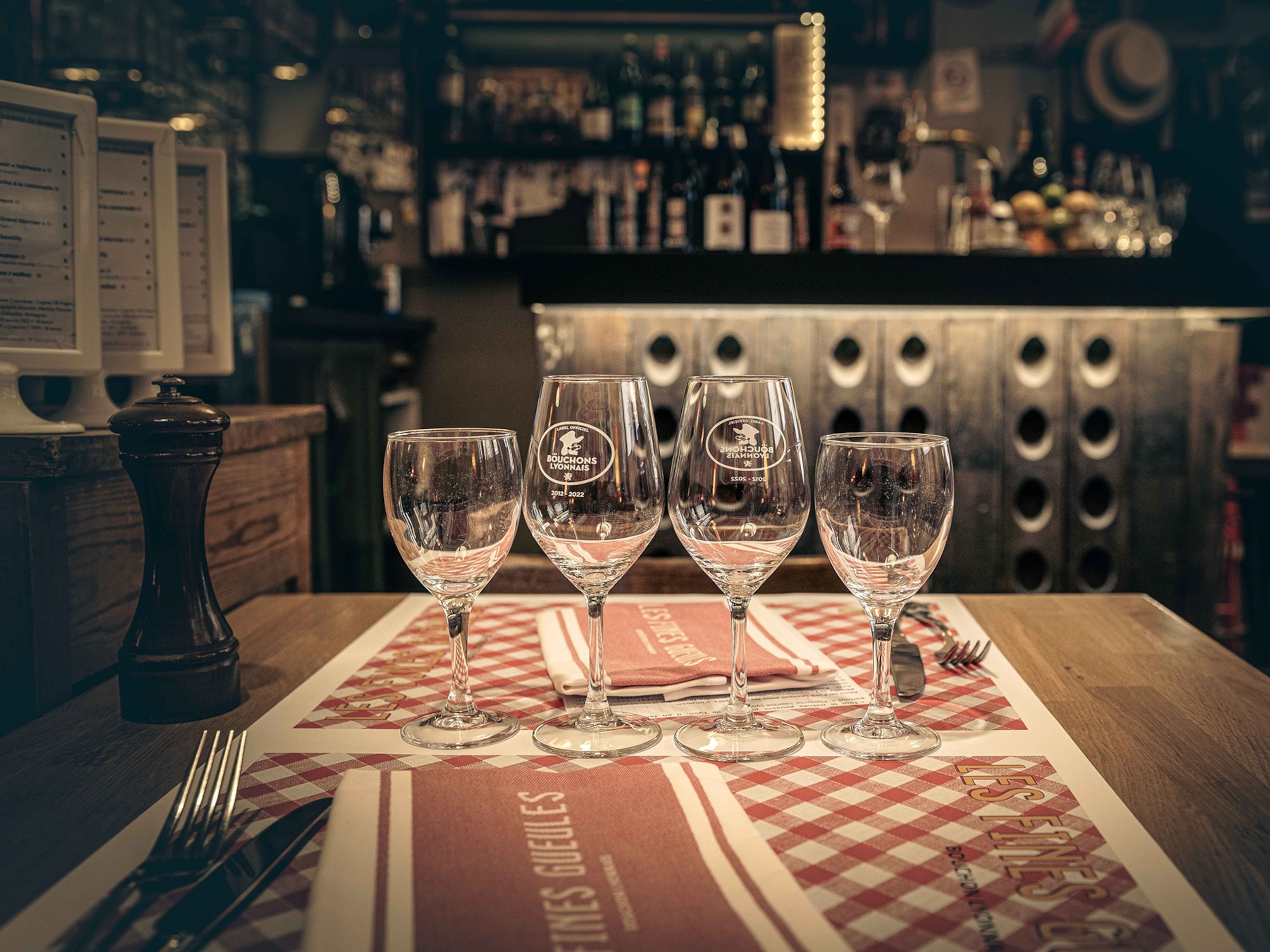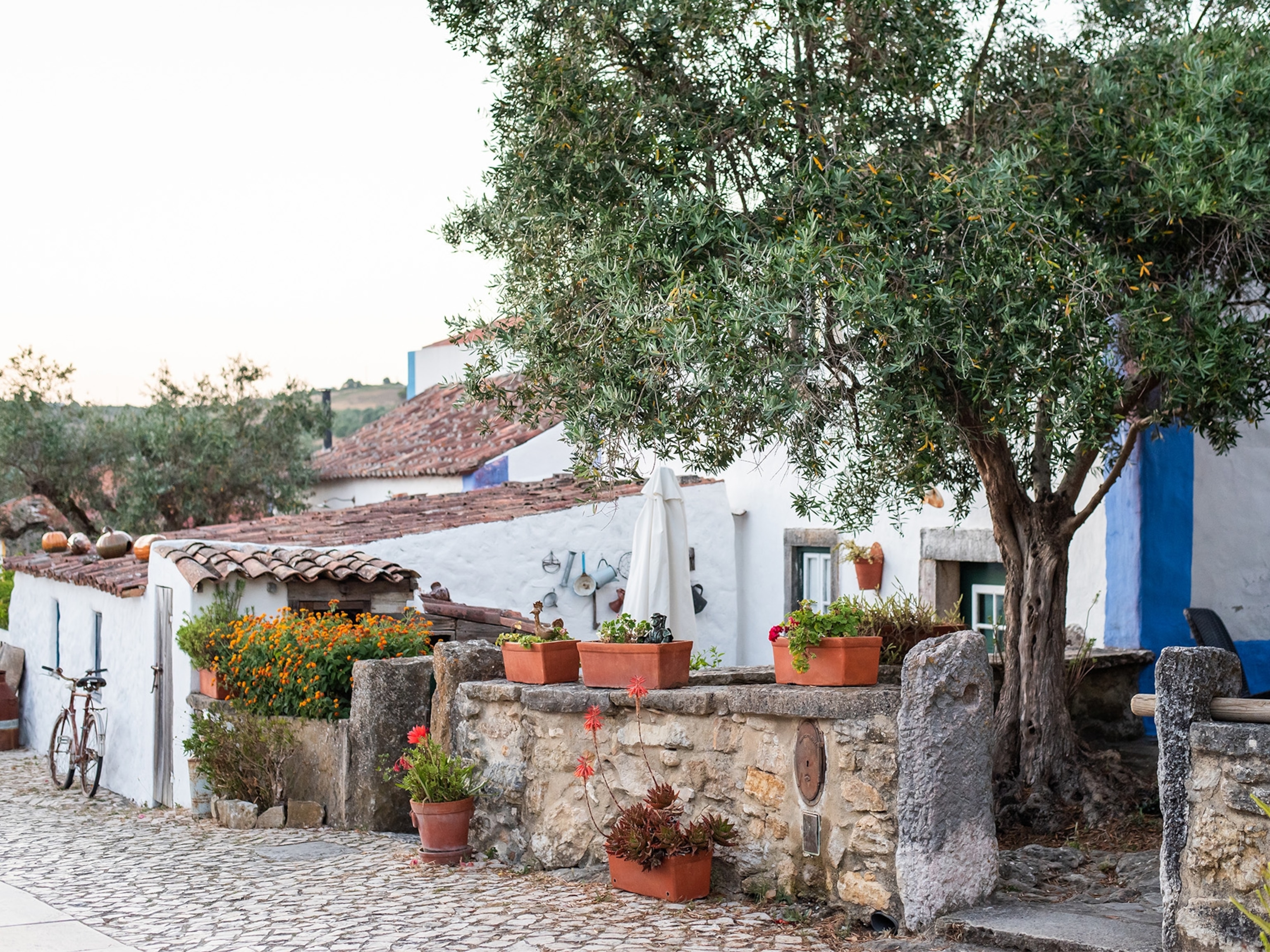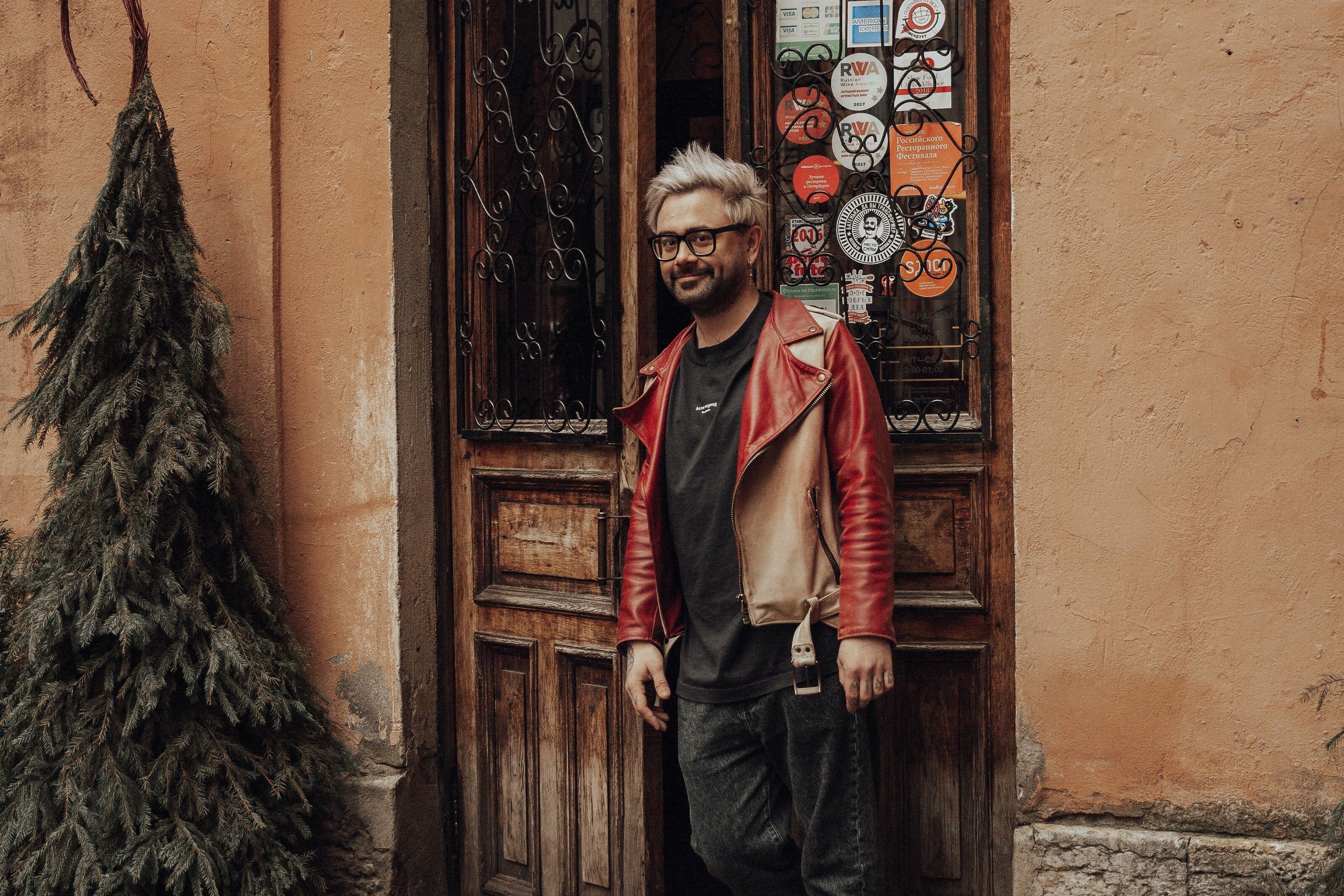
The pioneer: chef Evgeny Vikentev's experimental Russian cuisine
In St Petersburg, Evgeny Vikentev puts a distinctly modern spin on Russian cuisine. Faced with bans on whole swathes of foreign produce, creating experimental, outward-looking dishes can be tough — but he's up to the challenge.
“Have I helped to change people’s understanding of Russian flavours? Yeah, I think so,” says Evgeny Vikentev.
“I’ve had a lot of people come up to me after dinner and tell me, ‘Evgeny, that was super-interesting. We thought Russian cuisine was just pelmeni [dumplings].’”
The chef set up his St Petersburg restaurant, Hamlet + Jacks, in 2015, with friends Evgeniy Litvyak, Evgeniy Khitkov, Evgeniy Tonkov and Hamlet Movsisya. He’s part of a new generation of chefs spearheading a movement in Russian gastronomy, using local ingredients and modern techniques to push boundaries and change perceptions of the country’s cuisine.
Located a short walk from Nevsky Prospect, St Petersburg’s main shopping street, Hamlet + Jacks is a slick, industrial-style restaurant. You won’t spot pelmeni or borscht on the menu here — instead, you’ll find the likes of beef tongue, simmered in bulgogi sauce until it’s cushion-soft, and a 140-strong wine list, each option sourced from small-scale organic, biodynamic or natural wineries.
As executive chef, Vikentev’s aim is to make Russian cuisine — often regarded as stodgy and heavy on the dill — more attractive to modern palates. “My cooking is contemporary Russian gastronomy based predominantly on local ingredients,” he says. “It’s about adjusting and adapting to what you have. My goal is always to create something unique, and to create a story and experience for my guests.”
Vikentev has managed to champion his country’s produce without restricting his own creative freedom by creating two separate menus at Hamlet + Jacks: ‘Ours’, which comprises dishes made solely from Russian ingredients; and ‘Ours + Theirs’, which combines regional delicacies, such as beef from the Voronezh region, with internationally sourced ingredients, like soba noodles.

“Part of the experience is being able to match these familiar, local flavours with those from around the world, allowing the diner to travel via the ingredients,” Vikentev explains. That globetrotting mindset is mirrored in the restaurant’s ‘10,000km of Flavours’ set menu. It’s a gastronomic trip around Russia that showcases produce and wines from different regions, such as Siberian venison carpaccio, onion marmalade and summer herb pesto washed down with, say, a glass of chilled rosé from North Ossetia-Alania.
Russia’s ban on most food imports from the US and the EU, which was imposed in 2014, has forced chefs like Vikentev to source ingredients closer to home, whether it’s duck from Rostov or crab from Kamchatka (“the best crab in the world”).
Of course, finding quality Russian produce is much easier now than it once was. Born during the final years of the Soviet Union, Vikentev grew up accustomed to a limited diet. “We had closed borders at that time, so we only had local stuff and some ingredients from Bulgaria, Czech Republic and a few countries across the USSR,” he says. “We’d go to the market and they’d have potatoes, carrots, chicken, onions and — that’s it. It was actually a very big problem. If you wanted to buy chicken, you’d have to queue for two and a half hours.”
After the collapse of the Soviet Union in 1991, larger grocery stores began importing a wider range of global produce. Vikentev’s parents responded by buying newly available food magazines and testing out unfamiliar ingredients and recipes at home. “One of the reasons Russia doesn’t have as strong a gastronomic culture as most of Europe is because our restaurant culture is still very, very young,” says Vikentev. He notes that, until the 1990s, very few people dined out; most of his formative culinary experiences were in his parents’ kitchen.
While the gastronomic scene may have been a long way from catching up to the innovation happening across Western Europe, Vikentev views the early post-Soviet period as the start of Russia’s modern culinary culture — and it was this newfound, widespread passion that inspired him to enrol in catering college. By the age of 26, he’d worked at some of St Petersburg’s finest restaurants, including Il Palazzo, La Maree, and Grato. Determined to expand his horizons, he travelled abroad, spending a brief but intense spell cooking aboard a private boat in the Mediterranean and honing his skills at restaurants including Giuseppe Ricchebuono’s Michelin-starred Il Vescovado and Albert Adrià’s 41 Degrees.

“The kitchen [at 41 Degrees] was tiny, like a small corridor, but the organisation was immense,” Vikentev says. “I learned some useful techniques, including modern techniques like spherification, but it wasn’t only about molecular cuisine. The team was super-motivated; they had a fire in their eyes.”
Having brought that fire back to St Petersburg, Vikentev began his first stint as head chef in 2014, at the now-closed Vinny Shkaf. Obscure Russian wines and dishes ranging from baked bone marrow risotto to a joyfully blithe dessert called ‘Coffee & Cigarettes’ summed up his creative, new-wave approach. At the time, the combination of old-school cooking methods, such as fermentation or open-fire grilling, alongside more avant-garde techniques involving liquid nitrogen would’ve been considered fairly outré even in some of the world’s more modish restaurants — in Russia, it was downright radical.
It was Vinny Shkaf’s runaway success — and Vikentev’s growing reputation as one of the country’s hottest chefs — that allowed him to open Hamlet + Jacks in 2015. Despite the acclaim, Vikentev acknowledges his cooking took a while to be accepted by Russian diners.
“When I started my style of gastronomy, it was pretty weird for customers,” he admits. “At the time, I was one of the first people [in Russia] to cook in that modern style. It was a struggle. My only guests at the beginning were people who were well travelled and had tried a lot of different foods: the foodies and the wine-lovers.”
Attitudes and tastes have since evolved and today, Hamlet + Jacks is one of the city’s busiest restaurants, popular with locals and visitors alike; it seems the only patron you won’t find here is a Michelin Guide inspector. The guide is yet to venture into Russia — not that Vikentev is losing any sleep over it.
“I don’t care about Michelin,” he says. “For me, the most important thing is how my guests feel. A lot of chefs are crazy about [the Michelin Guide]. For them, it’s everything. They want their one star, their two stars, their three stars, but they forget about a very important thing: gastronomy is art; it’s not a sport.”
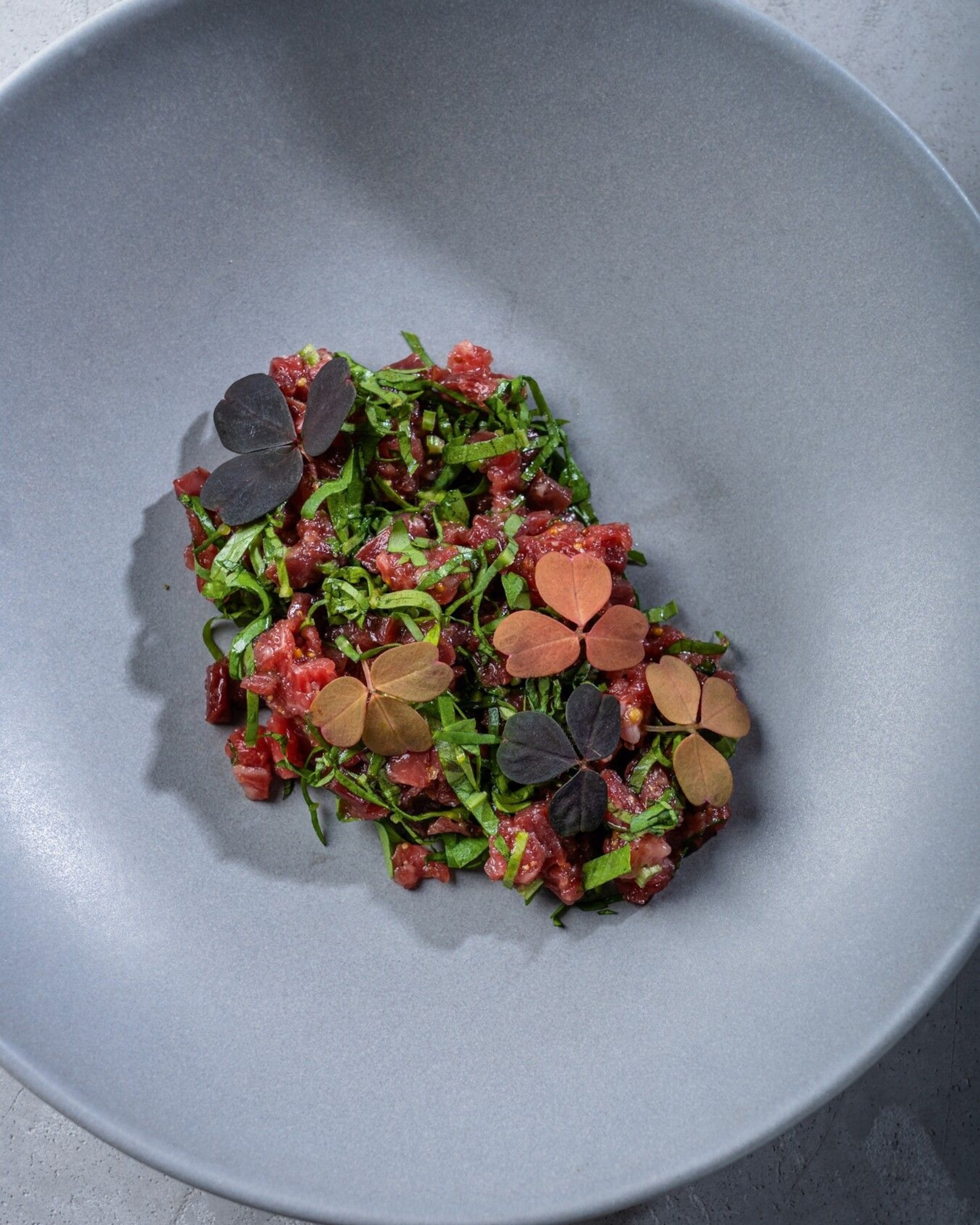
Three signature dishes at Hamlet + Jacks
1. Voronezh beef
Minced beef flank, dried beef and beef heart (above), all sourced from the southwest region of Voronezh, come together in this surprisingly light dish, first created by Vikentev at his now-closed Vinny Shkaf restaurant. The additions of sorrel and honey deliver a traditional Russian flavour profile of sweet and sour notes, while the crunchy nuggets of puffed buckwheat add a contrasting texture.
2. Murmansk salmon fillet 50°
Wild salmon, cooked low and slow at 50C, is turned into something so delicate it falls apart under the faintest pressure of a fork tine. The fillet is served alongside discs of barbecued carrot and a fermented carrot beurre monté that offset the richness of the salmon with their respective char and funk. The addition of saline oyster leaf ties each bite back to the fishing ports of Murmansk.
3. From roots to cake
Vikentev’s innovative approach to gastronomy is epitomised by this vibrant dessert: a bright purple goat’s cheese and beetroot cheesecake that tastes as striking as it looks. The gingerbread base retains a slight herbal note and the accompanying baked potato ice cream and candied carrot showcase the ease with which vegetables can be incorporated into sweet courses.
Published in Issue 10 (winter 2020) of National Geographic Traveller Food
Subscribe to our newsletter and follow us on social media:
Facebook | Instagram | Twitter

